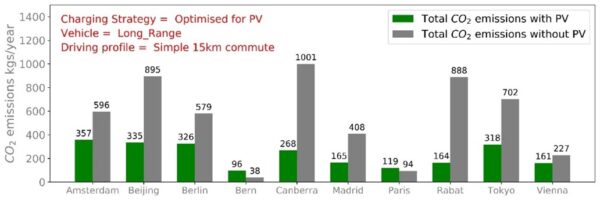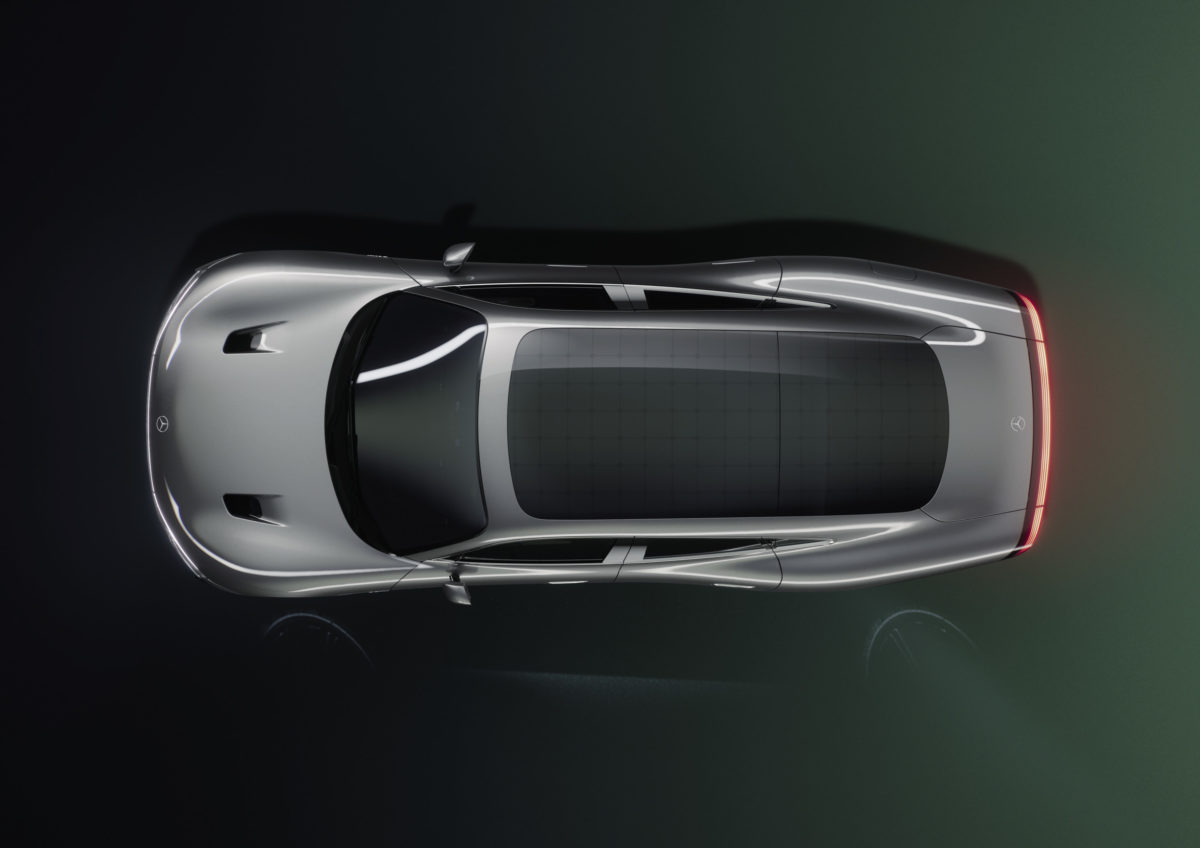The market for PV-powered vehicles is in its early stages. PV-powered vehicles offer benefits in terms of a further reduction of CO2 emissions in electric vehicles. However, there are some challenges still to be overcome before PV-powered vehicles can become ubiquitous. The Task 17 team of the International Energy Agency's Photovoltaic Power Systems Programme (IEA PVPS Task 17) published a report based on preliminary results in 2021 (State-of-the-Art and Expected Benefits of PV-Powered Vehicles) aiming to clarify the potential of PV in transport and proposed ways to realize these concepts.
To a certain extent, PV-powered vehicles replace grid or charging station electricity with on-board PV generated electricity. This offers benefits for users in terms of reduction of CO2 emissions (in most countries), cost savings, and reduction in the frequency of grid charging, as well as “cool” benefits in terms of autonomy and independence.
The vast majority in the development of PV-powered vehicles are passenger car-based projects, especially short driving range commuter vehicles, ultra-light weight vehicles, and high efficiency vehicles with silicon-based cells being the most common technology used. PV-power can, however, also be considered for auxiliary components including air conditioning systems, refrigerators, and heating systems in heavier commercial vehicles, such as truck trailers, delivery vehicles, and buses. For these latter applications, PV power often helps reduce fuel consumption, which seems a compelling proposition from a financial point of view.
The environmental impact
Case studies on the reduction of CO2 emissions in PV-powered passenger vehicles have been conducted in Japan and the Netherlands, and these have shown that benefits of PV-powered vehicles depend on variables such as driving patterns, available solar irradiance on the vehicle, vehicle efficiency, battery size, PV capacity installed, and the utilization of the PV resource. For longer driving distances in particular, a reduction of emissions of approximately 220 kg CO2-eq/year has been observed in Japan; however, the reduction of CO2 emissions depends on the carbon intensity of the local grid and varies from one country to another. To highlight these differences, the expected environmental benefits of PV-powered vehicles have been estimated for various cities by scientists of the IEA PVPS Task 17 (see Fig. 1).

Fig. 1: Comparison of CO2 emissions for each location with and without PV
In most cases, CO2 emissions are reduced during the operation of the vehicle by the on-board PV. However, in countries with low carbon grid energy (see Bern (Switzerland) and Paris (France) in Fig. 1), the embedded CO2 based on the manufacturing of the PV modules might lead to slightly higher lifetime emissions. State-of-the-art well-integrated PV technologies such as curved, flexible, and lightweight PV modules, in addition to higher efficiency PV technologies and longer PV component lifetimes, will contribute to increased PV electricity generation and to lower embedded emissions. Expected future higher PV efficiencies will allow for even better performing PV-powered vehicles.
The total and relative reduction in charging frequency for the different locations is directly related to the amount of PV energy generated (see Fig. 2).

Fig. 2: Comparison of total charging frequency for the long-range vehicle (left axis) and the relative reduction in charging frequency (right axis), for the simple 15 km commute profile
As shown in Figure 2, without PV, the charging frequency is very similar in all cities. With PV, the locations with higher irradiance – Canberra, Madrid and Rabat – see the largest reduction in charging frequency as PV contributes more to the driving energy needed.
Current issues for realizing PV-powered vehicles
PV modules integrated into vehicles will be tested and rated by two standards: as a PV system and as an electric exterior component of the vehicle. In comparison to standard home PV systems, which are installed in such a way as to avoid shades on the installation, PV modules on the roof of a car will often be shaded and are not oriented to optimize for the utilization of solar energy.
PV-powered vehicles can be optimized by taking into account solar irradiation, vehicle efficiency, battery capacity, and the efficiency of the PV power system. Any surplus electricity produced could be fed into the grid or used in connected buildings.
In order to realize the market potential of PV-powered vehicles, expected benefits should be further validated and evaluated on energy and environmental aspects, as well as the perspective of users. The results will form a solid basis for discussions with stakeholders such as automotive companies and policymakers.
This article is part of a monthly column by the IEA PVPS Programme. It was contributed by IEA PVPS Task 17 – PV & Transport. Further information can be found in Task 17’s report: PV Powered Electric Vehicle Charging Stations – Preliminary Requirements and Feasibility Conditions.
By Keiichi Komoto and Bettina Sauer
The views and opinions expressed in this article are the author’s own, and do not necessarily reflect those held by pv magazine.
This content is protected by copyright and may not be reused. If you want to cooperate with us and would like to reuse some of our content, please contact: editors@pv-magazine.com.



By submitting this form you agree to pv magazine using your data for the purposes of publishing your comment.
Your personal data will only be disclosed or otherwise transmitted to third parties for the purposes of spam filtering or if this is necessary for technical maintenance of the website. Any other transfer to third parties will not take place unless this is justified on the basis of applicable data protection regulations or if pv magazine is legally obliged to do so.
You may revoke this consent at any time with effect for the future, in which case your personal data will be deleted immediately. Otherwise, your data will be deleted if pv magazine has processed your request or the purpose of data storage is fulfilled.
Further information on data privacy can be found in our Data Protection Policy.